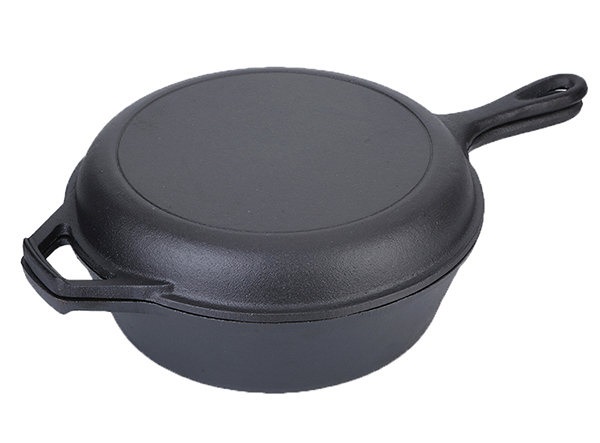How to Properly Reseason Your Cast Iron Skillet for Optimal Performance
Reseasoning a Cast Iron Pan A Step-by-Step Guide
Cast iron pans are renowned for their durability and exceptional heat retention, making them a beloved staple in kitchens around the world. However, over time, the seasoning on your cast iron skillet may deteriorate, leading to food sticking and a less-than-ideal cooking experience. Reseasoning your cast iron pan is a straightforward process that can revive its non-stick surface, enhance its performance, and prolong its lifespan. In this article, we'll explore the importance of reseasoning and provide a detailed guide on how to do it effectively.
Why Reseason Your Cast Iron Pan?
Seasoning is the layer of polymerized oil that forms on the surface of a cast iron pan, creating a protective barrier and providing non-stick properties. Factors such as regular use, improper cleaning, and exposure to moisture can impair this seasoning, causing it to flake, rust, or become less effective. Reseasoning not only restores the pan’s non-stick surface but also helps to prevent rust and can even improve its overall appearance.
When to Reseason Your Pan
You should consider reseasoning your cast iron cookware if - Food begins to stick to the surface. - The pan appears dull or rusty. - The seasoning layer seems to be chipping or flaking. - You have cleaned it with soap and water or used a dishwasher, which can strip away the seasoning.
Step-by-Step Guide to Reseasoning Your Cast Iron Pan
1. Clean the Pan Before you begin the reseasoning process, it's crucial to clean your cast iron skillet thoroughly. Use hot water and a stiff brush or a non-metal scrubber to remove any stuck-on food particles. If there is significant rust or a build-up of old seasoning, you might need to use steel wool to remove it entirely. Rinse the pan and dry it thoroughly with a clean cloth.
reseasoning a cast iron pan supplier

2. Apply Oil Once your pan is clean and dry, it's time to apply oil. Choose a high-smoke-point oil such as flaxseed oil, canola oil, or grapeseed oil. Pour a small amount of oil onto the surface of the pan and use a paper towel or cloth to spread it evenly across the interior, exterior, and handle. Be sure to wipe away any excess oil; too much can result in a sticky finish.
3. Bake the Pan Preheat your oven to 450°F (232°C). Place a sheet of aluminum foil or a baking sheet on a lower rack to catch any drips. Once the oven is heated, place your oiled cast iron skillet upside down on the middle rack. This allows any excess oil to drip off and prevents pooling. Bake the pan for about one hour.
4. Cool Down After the hour is up, turn off the oven and let the pan cool inside. This gradual cooling process helps the seasoning set properly. Once the pan is cool to the touch, remove it from the oven.
5. Repeat if Necessary For a stronger seasoning, consider repeating the oiling and baking process 2-3 times. This builds up a more robust non-stick surface, enhancing the skillet's performance and durability.
Maintenance After Reseasoning
To maintain your newly seasoned cast iron pan, avoid soaking it in water, and never put it in the dishwasher. Instead, clean it gently with hot water and, if necessary, a small amount of mild soap. After washing, be sure to dry it thoroughly and apply a light coat of oil to keep the seasoning intact.
Conclusion
Reseasoning your cast iron pan is an essential skill for any kitchen enthusiast. Not only does it restore and enhance your cooking experience, but it also allows you to take pride in maintaining a kitchen tool that can last generations. By following these steps, you’ll ensure that your cast iron skillet remains a reliable companion in your culinary adventures. Happy cooking!
-
Why Ecast Iron Grills Are Heating Up Outdoor CookingNewsMay.23,2025
-
Why Cast Iron Cookware Belongs in Every Kitchen?NewsMay.23,2025
-
Why Cast Iron Bakeware Is a Timeless Kitchen EssentialNewsMay.23,2025
-
Upgrade Your Kitchen with Cast Iron Bakeware SetsNewsMay.23,2025
-
Master Outdoor Cooking with the Camping Dutch OvenNewsMay.23,2025
-
Casserole Cast Iron Cookware for Rich, Slow-Cooked FlavorNewsMay.23,2025
-
The Ultimate Guide to Cast Iron Deep Dish Pizza PerfectionNewsMay.21,2025
